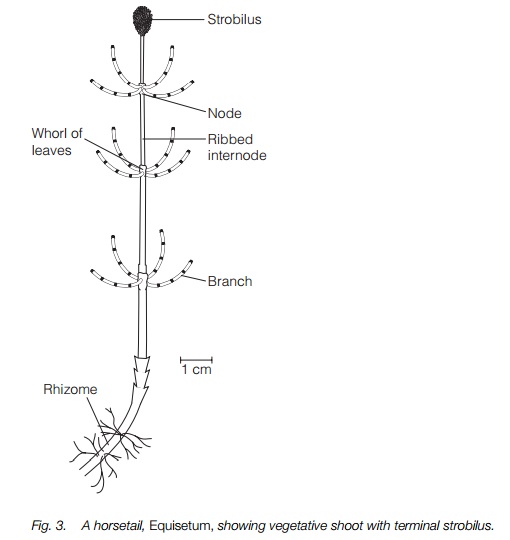Chapter: Plant Biology : Spore bearing vascular plants
Vegetative structure of Equisetopsida
Vegetative structure of Equisetopsida
There is only one living genus and about 20 species in the Equisetopsida, known as horsetails, Equisetum. They are herbaceous perennial plants, mostly up to 1m in height, world-wide in distribution, but mostly in the northern temperate region where they are quite common. South and Central American species are taller, reaching 10 m, and in these the shoots are perennial. In the smaller northern plants, only the below-ground parts survive the winter.

The living horsetails have a characteristic rough jointed stem (Fig. 3). This is ribbed, with scale-like microphyll leaves at the joints where they readily come apart. Most species have whorls of side branches from the main stem. They have an extensive rhizome system, the rhizomes being similar to the above-ground stem with nodes from which roots arise. This allows horsetails to colonize large patches, and their ability to regrow from a fragment of rhizome means they can be pernicious weeds. The stems have extensive deposits of silica along their length which gives them their rough texture, and their alternative name, ‘scouring rushes’, refers to the use of some as scourers. Growth abnormalities, such as no internodes or no side branches or dichotomous branching, are frequent in horsetails and this suggests that their growth regulation is poor.
Related Topics